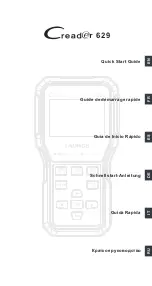
75
SECTION 7
SOLVING PROBLEMS
7.1 Troubleshooting
Table 12: General Troubleshooting and Diagnosis (continued)
Problem
Solution
Abnormal staining on entire surface of all slides
(continued).
When staining a full carousel (7 or more slides for the 12-
slide carousel or 17 or more for the 30-slide carousel),
make certain you have not programmed the stainer for
fewer slides.
If staining a partial load, load the slides in the correct
positions as indicated by the markings on the carousel
(see Section 4.1).
Depending on the carousel being used (12- or 30-slide),
make sure slides are oriented correctly on the carousel
(see Section 4.1).
Review sample and slide preparation procedures in
Appendix E.
Abnormal staining on entire surface of some slides, while
other slides from the same carousel appear normal.
Make certain that all position magnets are still attached
to the bottom of the carousel. Make certain you have not
programmed the stainer for fewer slides than you have
loaded.
If you program the stainer for a partial load, load the
slides in the correct positions as indicated by the
markings on the carousel (see Section 4.1).
Verify that each reagent pump is primed by opening the
lid and pressing the corresponding prime button. The
nozzle should immediately spray a fine mist of reagent.
There should be no sputtering or hissing sounds to
indicate the presence of air in the reagent lines (see
Section 7.3).
Review sample and slide preparation procedures in
Appendix E.
Streaks or bands of discoloration on one or more slides.
Check the level of the Reagent A bottle. Check Reagent A
spray volume according to Section 6.4.
Check nozzle spray pattern according to the procedures
in Section 6.6. This type of discoloration is usually caused
by a piece of debris or reagent precipitate clogging the
spray nozzle orifice.
Clean any nozzle that exhibits a poor spray pattern.
















































